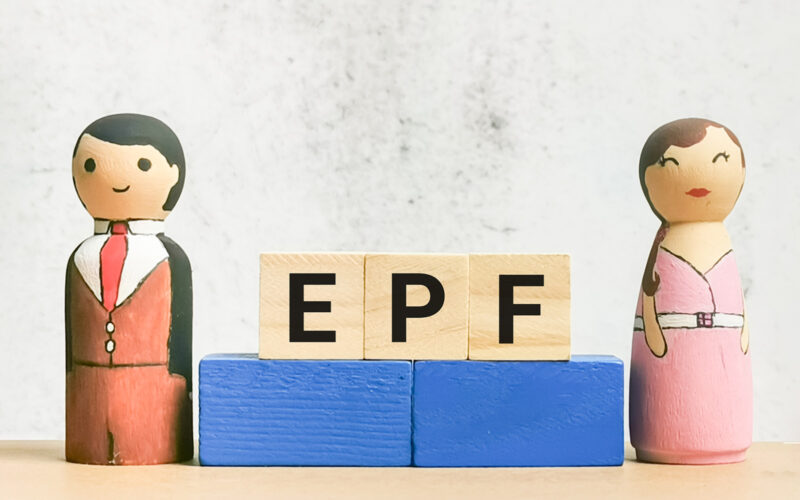Proposed EPF Wage Ceiling Increase to ₹21,000: Impact on Employers and Employees

Updated on: Dec 31st, 2024| 3 min read
Introduction
The Indian government is considering a significant revision to the Employees’ Provident Fund and Miscellaneous Provisions Act, 1952 (EPF Act). The wage ceiling for employees eligible for Provident Fund (PF) and Pension Scheme benefits will be raised from ₹15,000 to ₹21,000. This change is expected to benefit employees by extending social security coverage, improving pension benefits, and increasing the provident fund corpus. However, it will also introduce new financial responsibilities for employers.
What’s Changing?
Under the current system, employees earning a basic salary of ₹15,000 or less are mandatorily covered under the EPF scheme, while those earning more than ₹15,000 are not. The government’s proposal to raise the wage ceiling to ₹21,000 will extend benefits to a wider group of employees.
- Current Ceiling: ₹15,000/month
- Proposed Ceiling: ₹21,000/month
This revision aims to provide retirement benefits, including pension and provident fund, to employees who were previously excluded from these schemes due to their higher salaries.
Impact on Employees
The proposed wage ceiling increase brings both immediate and long-term benefits for employees.
- Expanded Coverage
Employees earning between ₹15,001 and ₹21,000, who were previously excluded, will now be included in the EPF and Pension Scheme, thus increasing their social security benefits. - Higher Pension Payouts
The revision will result in higher pension payouts as more employees become eligible for the Pension Scheme. The pension calculation is based on 8.33% of the employee’s salary, so a higher salary contributes to a higher pension. - Slight Reduction in Take-Home Salary
While this increase will improve retirement benefits, a portion of the employee’s salary will now be diverted to the Provident Fund and Pension accounts, which could result in a slight reduction in their immediate take-home salary. - Larger Retirement Corpus
Over time, employees will accumulate a larger provident fund balance, ensuring they have more funds at retirement, making this a step toward improving financial security in the long run.
Impact on Employers
Employers will face additional costs due to the expanded coverage and higher contributions required under the EPF Act.
- Higher Contribution Requirements
Employers will need to contribute to the EPF and Pension funds for a larger group of employees. As more employees become eligible, this will directly increase the employer’s financial responsibility. - Increased Administrative Charges
Employers will also incur higher administrative costs, as they will need to manage the increased number of employees who are now covered under the scheme. - Greater Financial Burden
In some cases, employers will have to allocate more funds to cover the additional contributions for each employee, which could affect the financial stability of businesses, especially smaller firms.
Scenarios Explained
To better understand the impact of this wage ceiling increase, let’s examine some real-life examples:
Scenario A: Employee earning above ₹21,000
For an employee earning ₹40,000 per month, the wage ceiling increase won’t directly impact their PF or pension contributions, as they are already covered based on their actual salary under the joint option scheme. In this case, both the employee and employer are contributing higher amounts to the PF and pension but are not affected by the wage ceiling increase.
- Existing PF Employee Contribution: ₹4,800 (12% of ₹40,000)
- Employer’s Contribution: ₹4,800
- Pension Contribution: ₹3,332 (8.33% of ₹40,000)
As the salary exceeds ₹21,000, this employee has already been contributing at a higher level under the existing system. The increase in the ceiling won’t change their situation.
Scenario B: Employee earning between ₹15,000 and ₹21,000
Now consider an employee who earns ₹20,000 per month. Prior to the proposed ceiling increase, this employee was not eligible for the Pension Scheme. However, with the wage ceiling increase, this employee will now be covered under the Pension Scheme, and a portion of their salary (8.33%) will be diverted to the pension account.
- Existing PF Employee Contribution: ₹2,400 (12% of ₹20,000)
- Employer’s Contribution to PF: ₹2,400 (3.67% of ₹20,000)
- New Pension Contribution: ₹1,666 (8.33% of ₹20,000)
While this change adds to the pension fund, it also reduces the employee’s immediate PF accumulation. However, over time, this will lead to higher pension payouts when the employee retires.
Scenario C: Employee earning below ₹15,000
For employees already earning below ₹15,000, no changes will occur since they are already covered under the EPF and Pension schemes. The only difference is that more employees will be included as a result of the wage ceiling increase.
What Are the Key Benefits of the Proposed Change?
- Expanded Social Security Coverage
More employees will now have access to provident fund and pension benefits, increasing their social security and financial protection. - Higher Retirement Savings
Employees will benefit from a larger retirement corpus, ensuring better financial stability post-retirement. - Higher Pension Payouts
With more employees eligible for the Pension Scheme, they can look forward to higher pension payouts in the future. - Financial Security for Employees
Though there may be a slight reduction in take-home salary, the long-term benefits of this revision will improve retirement security.
Challenges for Employers
Employers will face an increase in their financial obligations, as more employees will fall under the mandatory coverage. This includes higher contributions and additional administrative costs. Smaller businesses might struggle with this added financial burden, making it a challenge for them to meet the new requirements.
Conclusion
The proposed wage ceiling increase under the EPF Act is a positive step toward improving retirement benefits for employees. However, it brings new financial challenges for employers, particularly with the increased number of employees covered under the schemes. Employees will see better pension payouts and a larger provident fund accumulation, but their take-home salaries may decrease slightly in the short term. Ultimately, this change aims to provide employees with greater retirement security, helping them build a stronger financial future.
Let’s Connect!
Trusted By Your Favorite Brands






